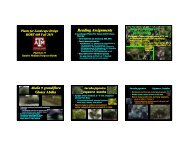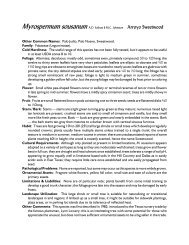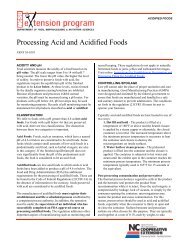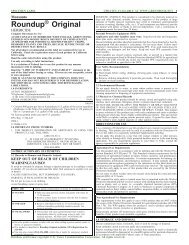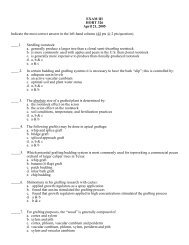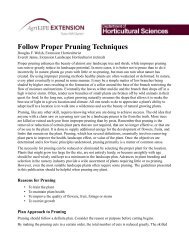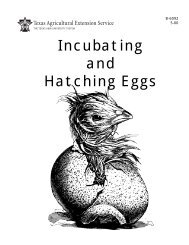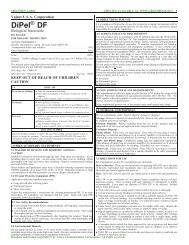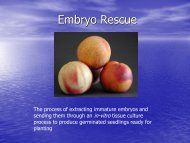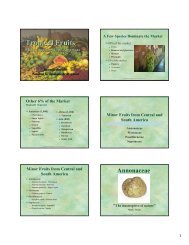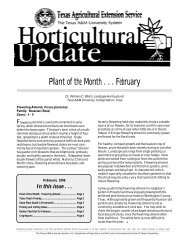Guide to PAS 2050 How to assess the carbon ... - Aggie Horticulture
Guide to PAS 2050 How to assess the carbon ... - Aggie Horticulture
Guide to PAS 2050 How to assess the carbon ... - Aggie Horticulture
Create successful ePaper yourself
Turn your PDF publications into a flip-book with our unique Google optimized e-Paper software.
18<br />
Section II: Calculating product <strong>carbon</strong> footprints<br />
For example, when collecting data on flour milling, a<br />
spreadsheet such as that shown in Table 2 may be<br />
useful <strong>to</strong> capture key pieces of primary activity data.<br />
For more complex processes, more information on <strong>the</strong><br />
technology and sub-process steps would be required<br />
(such as source of wheat, fertiliser used, etc.).<br />
Secondary data<br />
Where primary activity data is not available, or is of<br />
questionable quality (e.g. when appropriate measurement<br />
meters are not available), it is necessary <strong>to</strong> use<br />
secondary data derived from sources o<strong>the</strong>r than direct<br />
measurement.<br />
In some cases, secondary data may be preferable <strong>to</strong><br />
enable consistency and, where possible, comparability:<br />
• Global warming potential of greenhouse gases<br />
• Electricity emissions (in kg CO e per kWh) from<br />
2<br />
various energy sources<br />
• Fertiliser/pesticide emissions per kg<br />
• Fuel emissions per litre<br />
• Transport emissions per km per vehicle type<br />
• Waste emissions per kg<br />
• Agriculture emissions from lives<strong>to</strong>ck and/or soils<br />
Global warming potential (GWP) is a term used <strong>to</strong><br />
describe <strong>the</strong> impact over 100 years of one unit of<br />
a greenhouse gas relative <strong>to</strong> an equivalent unit of<br />
<strong>carbon</strong> dioxide.<br />
Table 2: Example of a data collection template<br />
Data collection example: flour supplier interview<br />
Notes<br />
T flour / T croissants 0.6<br />
Wheat production breakdown (1 T wheat yields):<br />
% flour 80%<br />
% wheat germ 10%<br />
% animal feed 5%<br />
% waste 5%<br />
kWh <strong>to</strong> produce 1 T wheat milled 100<br />
Electricity source<br />
UK grid average<br />
On-site s<strong>to</strong>rage?<br />
On-site transport?<br />
Ambient<br />
None<br />
Transport <strong>to</strong> croissant fac<strong>to</strong>ry:<br />
Vehicle type<br />
Articulated truck<br />
Distance between supplier and fac<strong>to</strong>ry<br />
200 km<br />
Fuel consumed per trip<br />
80 L<br />
# of trips per <strong>to</strong>nne flour 0.3<br />
% of vehicle dedicated <strong>to</strong> flour 100%<br />
% of return journey filled with o<strong>the</strong>r goods 0%




